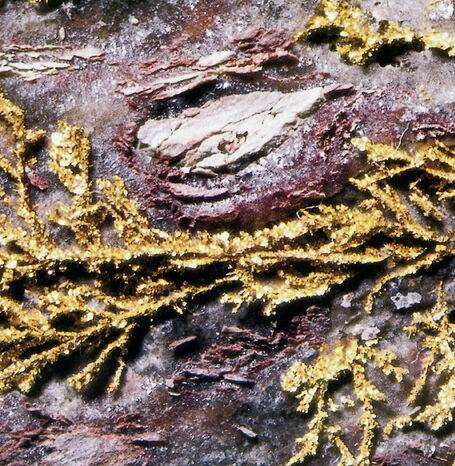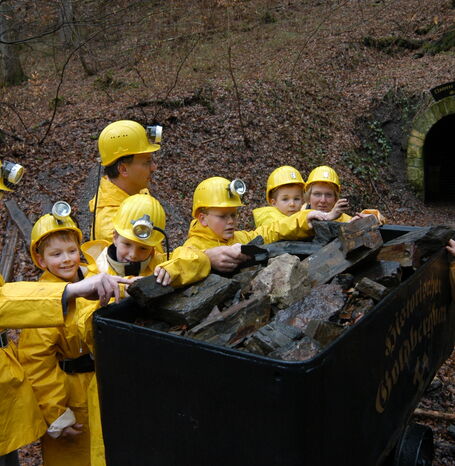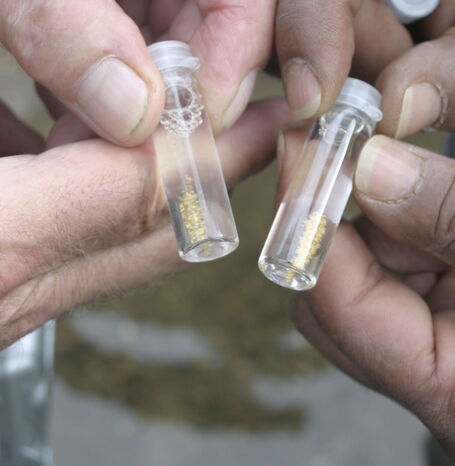During the formation of the Rhenish Slate Mountains around 290 million years ago, so much gold crystallized in fissure areas that Germany's richest gold deposit developed in the Eisenberg. The Eisenberg near the town of Korbach in the Korbach-Ittertal Geopark region is Germany's most important gold deposit. Extensive open-pit mines were operated here as early as the 11th and 12th centuries, and their relics can still be seen in the landscape today. In addition, some 20 km of tunnels, almost all of them driven into the mountain by hand, have been preserved in the mountain itself. A total of about 1.2 tons of gold were extracted from the mountain before mining ended in the 17th century.
The "Eisenberg Gold Mine" is a medieval gallery that can be experienced very impressively - equipped only with a miner's own light. The guided tours start at the colliery house, which is located directly at the recreational area and the village community center of Goldhausen.
TIP
On the Goldspur nature trail, two circular routes open up and present the above-ground traces of mining on the Eisenberg.
For more info, visit the museum's homepage.





